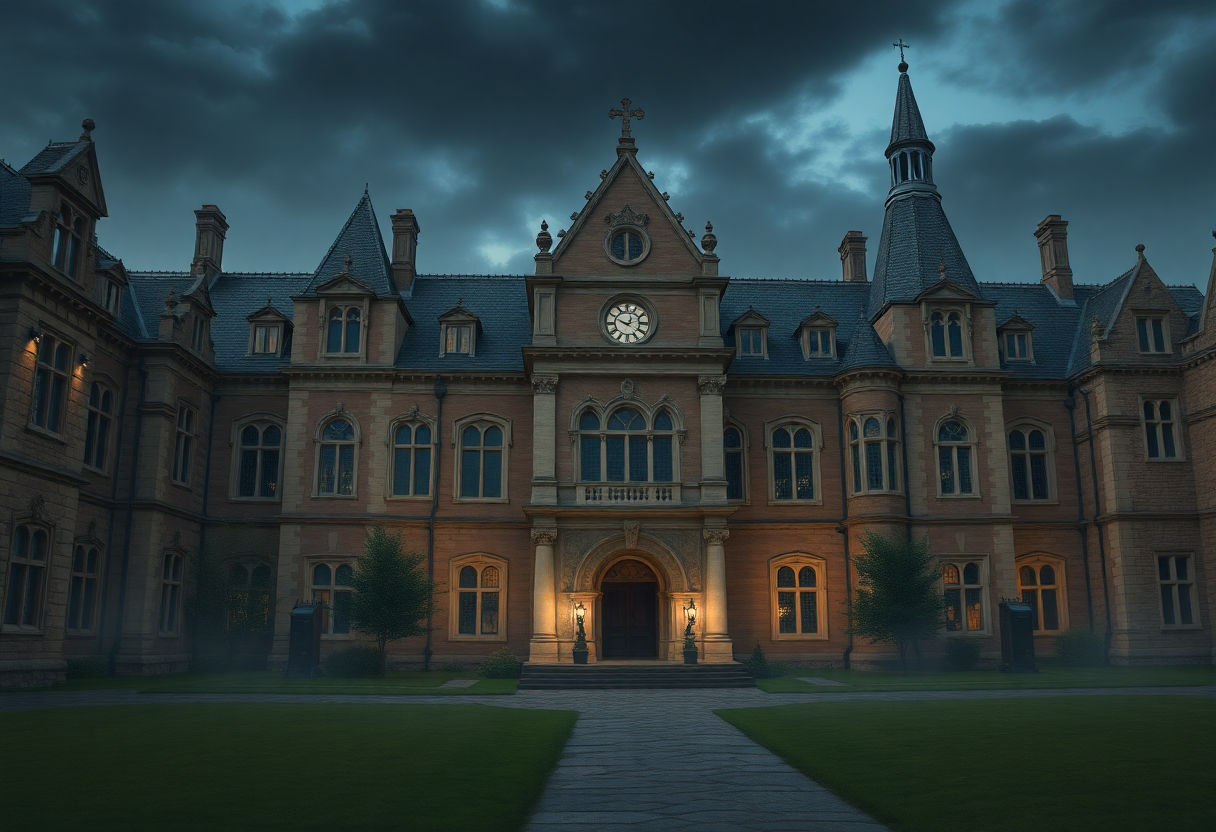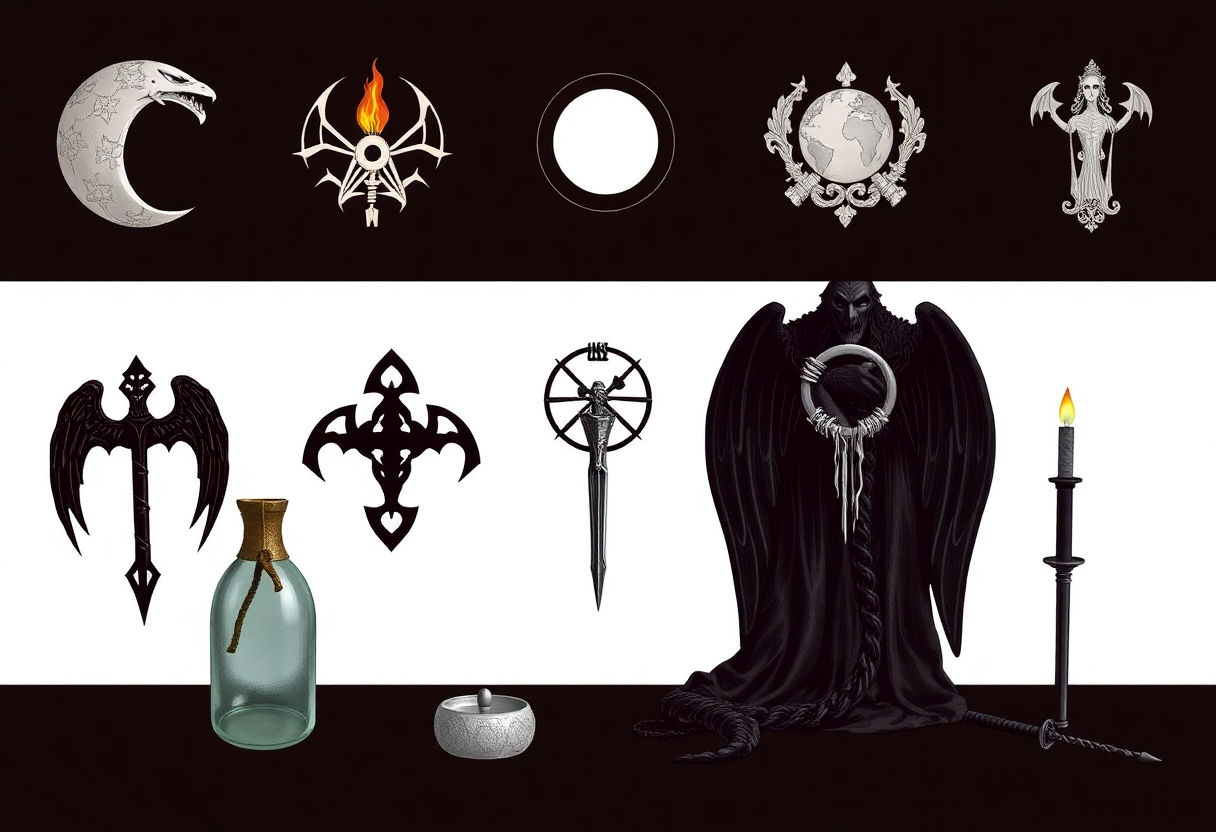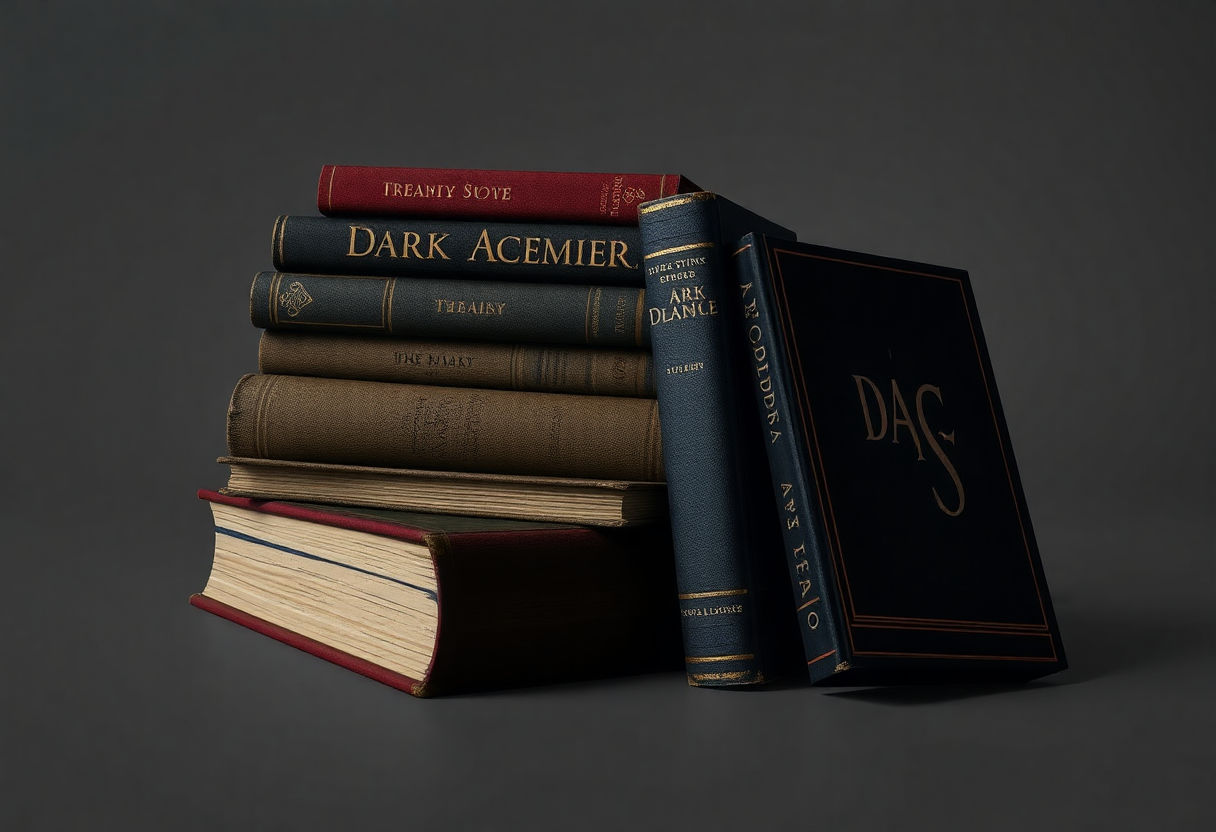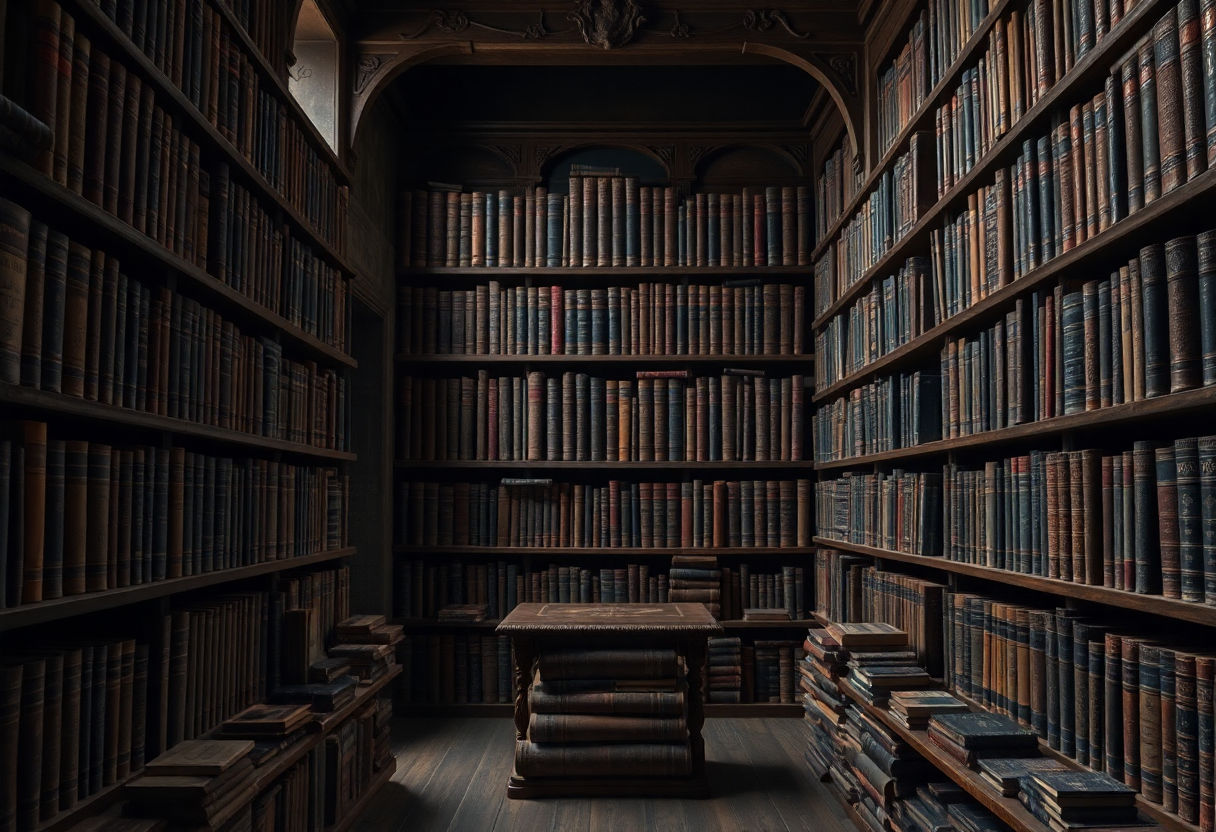HBP Dark Academia has emerged as an alluring subculture, capturing the imagination through its blend of nostalgic aesthetics and profound intellectualism. Steeped in historical roots, it intertwines with literature to create a rich tapestry that resonates with both the past and present. This article delves into the origins, influence on modern literature, and its undeniable cultural impact, dissecting the role of libraries, gothic architecture, and pivotal literary works. As we navigate through its themes and motifs, we also address the criticisms it faces, offering a comprehensive exploration. Embark on this journey to uncover the enigmatic world of Dark Academia.
Key Takeaways
- Dark Academia is an aesthetic and cultural movement rooted in nostalgia and intellectualism, drawing heavily from classical literature and history.
- The aesthetic emphasizes gothic architecture and the romanticism of the scholarly lifestyle, often manifesting in a timeless fashion sense.
- Literary works and authors central to Dark Academia reveal recurring themes of existentialism and a yearning for academic rigor.
- While praised for its depth and allure, Dark Academia faces criticisms for elitism and exclusivity within its community.
- The movement continues to impact modern literature, influencing both new works and contemporary interpretations of classic texts.
The Origins of Dark Academia

The roots of Dark Academia reach deep into the annals of history, intertwining with the traditions of classical education and humanistic learning. Originating from the time-honored pursuit of knowledge prevalent during the late Renaissance and Enlightenment periods, this aesthetic celebrates intellectual rigor and scholarly pursuits. In its essence, Dark Academia draws inspiration from the rich tapestry of Greek and Roman classics, emphasizing the profound impact these ancient cultures have had on Western intellectual thought.
The movement finds its philosophical underpinnings in the works of early scholars and the literary giants of the 18th and 19th centuries. These eras were characterized by a deep reverence for knowledge, where universities became sanctuaries of learning, enveloped in a somber yet inspiring atmosphere. This environment of academia not only fostered intellectual advancement but also a certain romanticism about the gothic and the mysterious.
Key historical influences on Dark Academia include:
- The establishment of prestigious institutions like Oxford and Cambridge, which epitomized the scholarly aesthetic that Dark Academia idolizes.
- The renaissance of Greco-Roman philosophies that shaped the educational frameworks of the time.
- The gothic revival in architecture and literature during the 19th century, which added a distinct aesthetic layer to the scholarly world.
Moreover, Dark Academia romanticizes the pursuit of esoteric knowledge and the existential musings that accompany this quest. By looking backwards to these historical roots, the movement reaffirms the enduring allure of the pursuit of learning, draped in an embrace of shadowy elegance and intellectual complexity.
Influential Works and Authors
Influential Works and Authors in the realm of HBP Dark Academia have been powerful catalysts in shaping the movement, both as a literary genre and a cultural phenomenon. These works delve deep into the intellectual and emotional depths, encapsulating the gothic allure and philosophical intricacies central to Dark Academia.
Key literary works that have significantly influenced Dark Academia include Donna Tartt’s The Secret History, which epitomizes the genre with its exploration of elitism, morality, and classicism within an academic setting. M.R. James’s ghost stories also play a notable role, their eerie yet intellectual narratives setting a precedent for modern storytelling within the movement. The philosophical depth and exploration of existential dread in works such as Hermann Hesse’s Steppenwolf further propel the themes of introspection and intellectual pursuit.
Prominent authors such as Oscar Wilde and Mary Shelley have laid the groundwork with their exploration of decadent intellectualism and the questioning of societal norms. Wilde’s The Picture of Dorian Gray remains a quintessential read, with its themes of aestheticism and moral ambiguity. Shelley’s Frankenstein offers a wealth of existential questions that resonate with HBP Dark Academia’s focus on knowledge, creation, and the perils of transcending boundaries.
These influential works and authors not only embody the hallmarks of the Dark Academia aesthetic but also challenge readers to delve into the complexities of human thought and morality, compelling one to ponder the mysteries and paradoxes of intellectual pursuit and identity.
Themes and Motifs in Dark Academia

Dark Academia, steeped in an atmosphere of enigmatic intellectualism, showcases a rich tapestry of themes and motifs that captivate its audience. At the forefront is nostalgia, a yearning for bygone eras, often depicted through classical literature, vintage fashion, and ancient architecture. This motif speaks to the human desire to connect with the past, grasping for a golden age perceived as more profound and meaningful.
The exploration of existentialism is another prominent theme, where characters often grapple with life’s purpose and the pursuit of knowledge. The existential quest challenges individuals to question the values of modern society, embracing a sense of alienation while seeking deeper understanding. This theme aligns with the philosophical musings of figures like Albert Camus and Jean-Paul Sartre, whose works inspire introspection and critical thinking.
Another significant motif is intellectualism, celebrated within academia’s rigorous confines. The allure of scholarly pursuit, late-night debates, and deciphering ancient texts are central to the Dark Academia aesthetic. It fosters a culture that reveres the wisdom found in libraries, where dusty tomes are portals to enlightenment.
Moreover, forbidden knowledge and secrecy play vital roles, creating an aura of mystery and intrigue. Characters often uncover hidden truths or engage in clandestine activities within the hallowed halls of prestigious institutions. This motif underscores the tension between knowledge and power, evoking a sense of danger and allure.
These themes, interwoven with a rich ambiance of antiquity and intellectual fervor, define Dark Academia’s enduring mystique, appealing to those who seek depth, reflection, and an escape into a world where learning is both the journey and the destination.
The Cultural Impact of Dark Academia

The influence of Dark Academia extends far beyond literature, permeating various aspects of popular culture, fashion, and education. This aesthetic, rooted in a profound appreciation for learning and scholarly pursuit, has become a prominent motif in today’s world.
Popular culture has witnessed a resurgence in Dark Academia’s themes, as the aesthetic resonates with a younger audience seeking depth and intellectual enrichment. Platforms like Tumblr and TikTok have amplified this cultural movement, allowing communities to thrive and share their passion for the vintage allure and introspective nature of Dark Academia.
In the sphere of fashion, Dark Academia is characterized by a preference for traditional, often vintage clothing. Key elements include tweed blazers, plaid skirts, oxford shoes, and a predominantly muted color palette. These styles reflect a longing for a bygone era of academia and intellectual pursuit. Such fashion choices are not merely aesthetic but symbolize an alignment with the values and philosophical outlook associated with the movement.
Education is another realm where Dark Academia has made an impression. The aesthetic encourages a romanticized view of academic life, emphasizing the beauty of intellectual endeavor and critical thought. It inspires students to engage deeply with the humanities, promoting a love for classical literature, philosophy, and history. This has led to a renewed interest in these disciplines, often perceived as antiquated in a fast-paced, technology-driven world.
Through these cultural facets, Dark Academia enriches the modern zeitgeist, providing a bridge between the past and the present while fostering a community of like-minded individuals drawn to its intellectual charm.
The Role of Libraries and Architecture
Libraries and architecture hold an essential position in the world of Dark Academia, serving as both a physical and symbolic core. Libraries, brimming with towering bookshelves and ancient texts, epitomize the pursuit of knowledge and the depth of intellectual exploration that is central to this subculture. They provide a serene sanctuary away from the chaos of modern life, where individuals can engage in scholarly endeavors, fueling their desire for learning and discovery. The hushed atmosphere and dim lighting contribute to an aura of mystery and timelessness, often inspiring moments of reflection and contemplation.
In tandem, the architectural elements of Dark Academia lean heavily on gothic influences, showcasing dark, intricate designs and majestic structures. The appeal of gothic architecture lies in its ability to evoke a sense of history and grandeur, with its characteristic pointed arches, ribbed vaults, and flying buttresses. These elements create a dramatic theatricality and evoke feelings of both awe and introspection.
Moreover, the settings often highlighted in Dark Academia—grand universities and ancient libraries—reveal a deep appreciation for the past. This nostalgia for old-world elegance intertwines with a yearning for intellectual fervor, shaping the aesthetic narrative.
As one scholar notes, “The walls of a library are, in essence, a repository of human thought, capturing the essence of time itself.” The juxtaposition of libraries and gothic architecture in this context thus fortifies the cultural and philosophical framework of the Dark Academia genre, celebrating not just the scholarly pursuit but also the profound beauty found in historical edifices and knowledge troves.
Dark Academia’s Criticisms and Controversies
The Dark Academia aesthetic, while widely celebrated, is not without its criticisms and controversies. A prominent critique is the perception of elitism embedded in its core elements. Many argue that the subculture romanticizes the exclusive access to prestigious institutions, which often caters to a privileged few, thus sidelining its broader accessibility. The fascination with classical education and historical European traditions often invokes an aura of nostalgia that some see as antiquated and exclusionary.
Another controversy lies in the aesthetic’s potentially problematic glorification of unhealthy behaviors. The intense focus on melancholia, existential reflection, and intense academic pressure can risk promoting detrimental lifestyles. Critics suggest that its emphasis on the ‘tortured intellectual’ trope may inadvertently endorse mental health struggles as a necessary component of intellectual depth and creativity.
Dark Academia’s largely Eurocentric perspective has also drawn attention. Its heavy reliance on Western literary traditions and gothic architecture leads to a narrow cultural representation. This focus neglects diverse voices and experiences, which can perpetuate a monolithic view of academia and literature.
The subculture’s aesthetic, while visually appealing, tends to prioritize surface-level engagement with its themes over substantive critique, leading to accusations of superficiality. This emphasis can dilute the rich intellectualism it purports to cherish, favoring style over content.
Despite these criticisms, proponents argue that Dark Academia offers a space for introspection and appreciation of literature and art, urging for a balance between celebrating its unique aspects and addressing its limitations.
Dark Academia in Modern Literature

Dark Academia has left an indelible mark on modern literature, transforming how contemporary stories are crafted. This literary genre, with its roots steeped in academia, mystery, and a celebration of classical education, has inspired a new wave of authors who weave its aesthetic into their narratives.
Modern authors often infuse their works with hallmark themes of Dark Academia, such as the pursuit of knowledge, the weight of intellectualism, and the shadows of existential angst. These themes serve as both setting and inspiration, driving narratives that explore the intricate dance between knowledge and power.
Books such as “The Secret History” by Donna Tartt have paved the way for new entries in the genre. The novel’s deep dive into the lives of privileged students entangled in a web of secrets showcases the profound allure of Dark Academia. Authors like M.L. Rio, with works like “If We Were Villains,” continue to explore these bleak yet fascinating landscapes, drawing readers into stories suffused with tension, tragedy, and introspection.
Millennial and Gen Z readers are particularly captivated by this genre, as it resonates with the quest for identity and belonging. Literature today often mirrors their struggles, depicting characters who question traditional values while navigating the equally imposing halls of academia.
In essence, Dark Academia in modern literature challenges authors and readers alike to reflect on the enduring allure of knowledge and the mysteries that academia holds, solidifying its position as a powerful and evocative narrative force.
Conclusion
The enduring allure of HBP Dark Academia lies in its profound ability to capture the confluence of nostalgia, intellectualism, and aesthetic beauty. While it faces critiques of elitism, its influence on modern literature and popular culture is undeniably transformative. As readers and thinkers continue to seek a deeper connection with the past, Dark Academia serves as both a reflection and a guide for exploring our intellectual and artistic heritage. As it continues to evolve, it offers an exciting opportunity for creative exploration and cultural reflection, encouraging future generations to engage with its complex tapestry of themes.
Frequently Asked Questions
What is HBP Dark Academia?
HBP Dark Academia refers to a branch of the Dark Academia aesthetic that places a strong emphasis on the exploration of literature, history, and philosophy. It seeks to understand human experiences and emotions through an intellectual and somewhat mysterious lens.
How did Dark Academia originate?
Dark Academia originated as a subculture in the early 2000s, gaining popularity through online platforms. It draws inspiration from classic literature, gothic architecture, and historical academic settings to create a nostalgic and intellectual aesthetic.
What themes are commonly explored in Dark Academia?
Common themes in Dark Academia include nostalgia, existentialism, and a profound love for learning. These themes often highlight a yearning for the past and an exploration of life’s deeper meanings.
Why is gothic architecture significant in Dark Academia?
Gothic architecture is significant in Dark Academia due to its historic and imposing nature, which evokes a sense of mystery and reverence. It serves as a backdrop that complements the aesthetic’s focus on intellectual and philosophical exploration.
What criticisms does Dark Academia face?
Dark Academia faces criticisms related to elitism and exclusivity, as it often emphasizes prestigious institutions and privilege. Additionally, some argue that it romanticizes mental health struggles and neglects diversity within the academic sphere.



